Día de Muertos and Other Hispanic Traditions

-
Save
Día de Muertos (1st and 2nd of November) has become one of the most well known and recognizable Hispanic traditions internationally. Movies such as Coco have made this happen. But did you know that there are many more traditions among Hispanic countries? In this post we’ll tell you all about the most interesting customs and traditions.
In this post you'll find:
- The most popular traditions for Día de Muertos in Hispanic countries,
- many dishes and pastries typical during these celebrations,
- some videos to learn more about these unique traditions.
Día de todos los Santos and Día de los Fieles Difuntos
Spanish people don’t see the 1st and 2nd of November as a colourful time to party, like they do in Mexico, they consider these days a time to remember those who are no longer with us, it’s a religious tradition. The day before (on the 31st of October) people visit the cemetery to bring flowers to their loved ones who are buried there.
On November the 1st it’s the Día de todos los Santos (All Saints’ Day) and according to the Catholic tradition it’s time to celebrate all the saints and all the people who are in heaven. However, on November the 2nd, it’s the moment to pray for those who have died but are still in Purgatory.
As you can see it’s not really a party, but we do have some traditional pastries just for those with a sweet tooth. If you like really sweet things, these pastries would be perfect for you.
Panellets
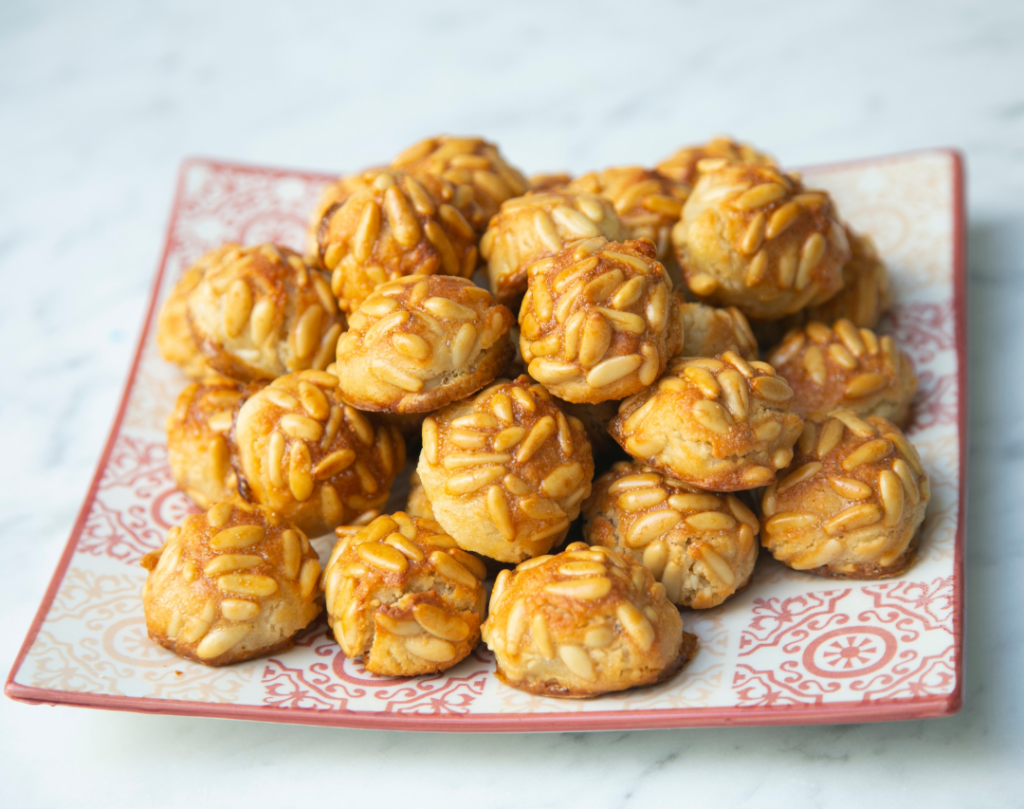
-
Save
Ball-shaped pastries originally from Cataluña, Aragón, Valencia and Baleares, which are made of almond, eggs, sugar and lemon zest, and they are covered with pine nuts. They’re quite similar to marzipan and they’ve been around since eighteen hundreds.
Buñuelos de viento
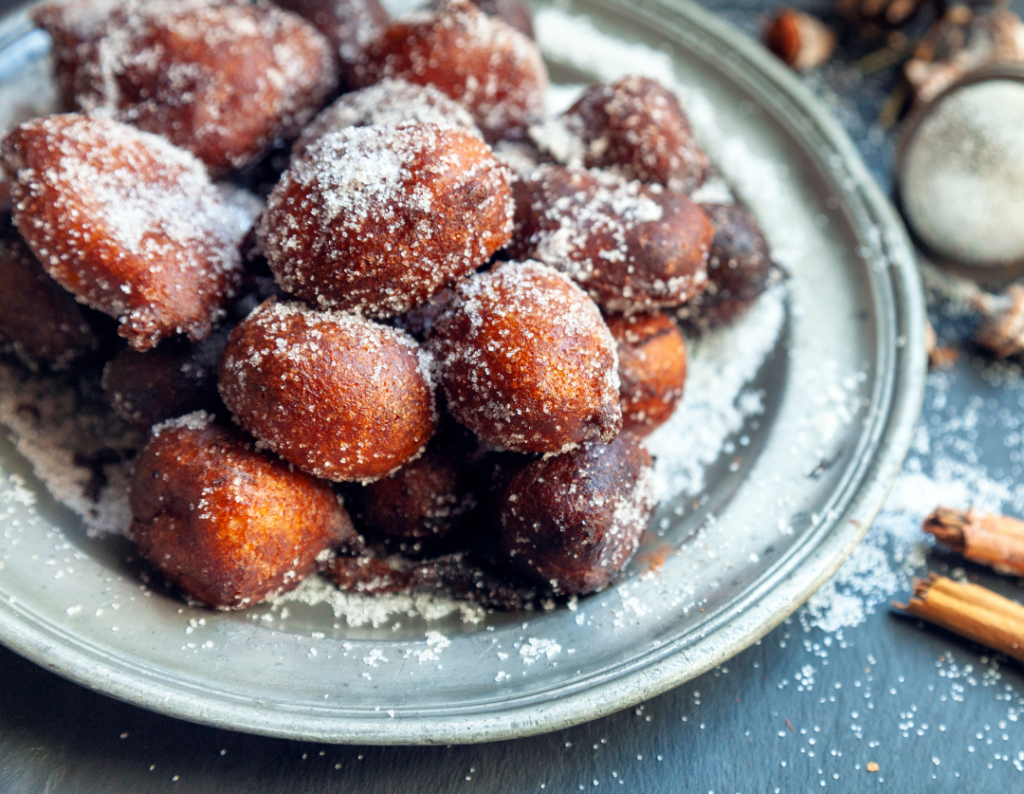
-
Save
They are fried profiteroles covered with sugar. They’re called “de viento” (wind) because they rise when they’re fried and they don’t have any filling.
Huesos de santo
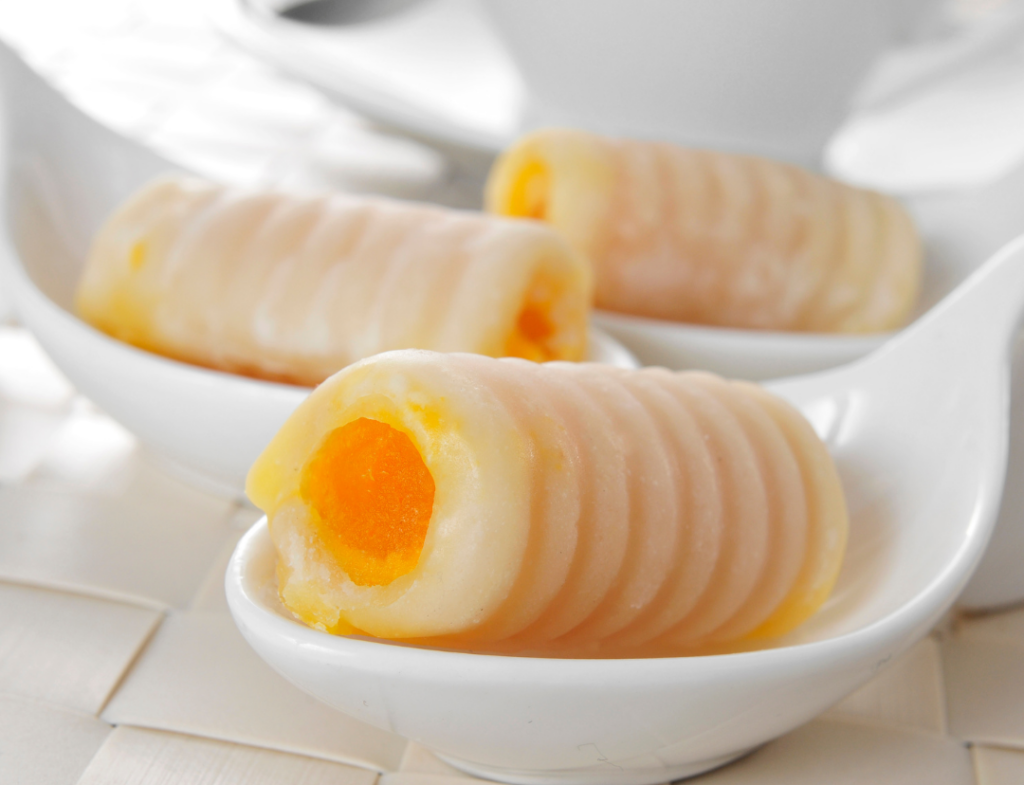
-
Save
It’s the most famous pastry of this celebration. It’s made of almond paste, eggs, and lots of sugar. They’re called huesos de santos (saints’ bones) because their elongated shape and their colour are supposed to represent a bone. Since they’re prepared for these festivities they get the name “de santos”.
Castañas (chestnuts)
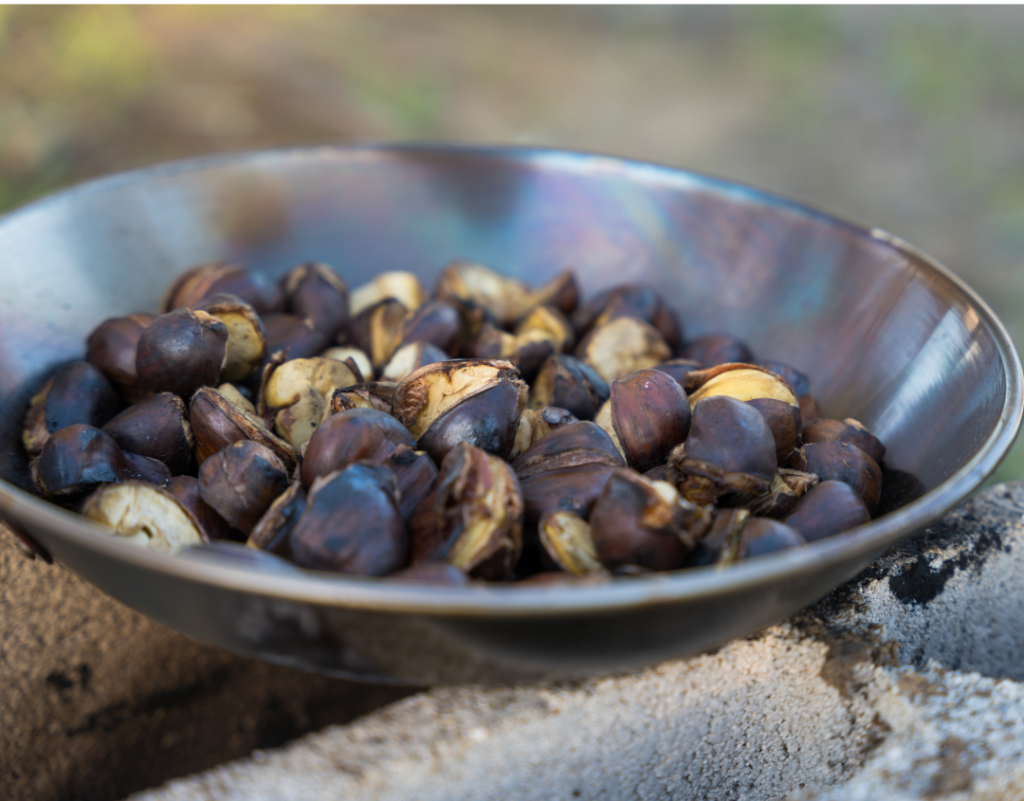
-
Save
Seasonal products are common in every family gathering during these days. Chestnuts are prepared in a number of ways, but roasted chestnuts are the most popular ones.
Día de Finados
In the Canary Islands, not only do they celebrate Todos los Santos and Fieles Difuntos but they also have an old tradition in the rural areas of these islands. Known as Día de Finados (finados = dead people), it consisted of children in rural areas going from door to door with a bag called talega, asking “¿Aquí hay santo?” (Is there a saint in here?), when the answer was “yes” they received chestnuts, nuts, figs and other seasonal fruits or edible things to put in their talega. In the evening families and neighbours would join to share a seasonal meal and they would tell stories and anecdotes about their relatives and friends who had passed.
Nowadays children don’t go around asking for treats, but in many towns people still get together to remember those who have died and to eat chestnuts.

-
Save
Día de Muertos
The most famous tradition outside the Hispanic countries where it’s held is Día de Muertos (1st and 2nd of November). It has become mainstream thanks to Mexican people and it’s inscribed in the Representative List of the Intangible Cultural Heritage of Humanity by UNESCO, but it’s also celebrated in other Hispanic countries such as Guatemala, Bolivia and El Salvador.
Families set an altar in their homes and they also decorate the cemeteries with flowers, candles, and their loved ones favourite food and drinks.
Music, dance and vibrant colours characterised a way of remembering those who have died with glee. Its origin is really old and combines Mesoamerican indigenous traditions with catholic rituals. If you’d like to know more about this celebration, you can watch this video with the main traditions from the different countries where they celebrate Día de Muertos.
Food has a central role in these celebrations because they are part of the altars as an offering to the dead and people also prepare special dishes to share with family on these days. The most characteristic dishes for Día de Muertos are:
Wawas or guaguas
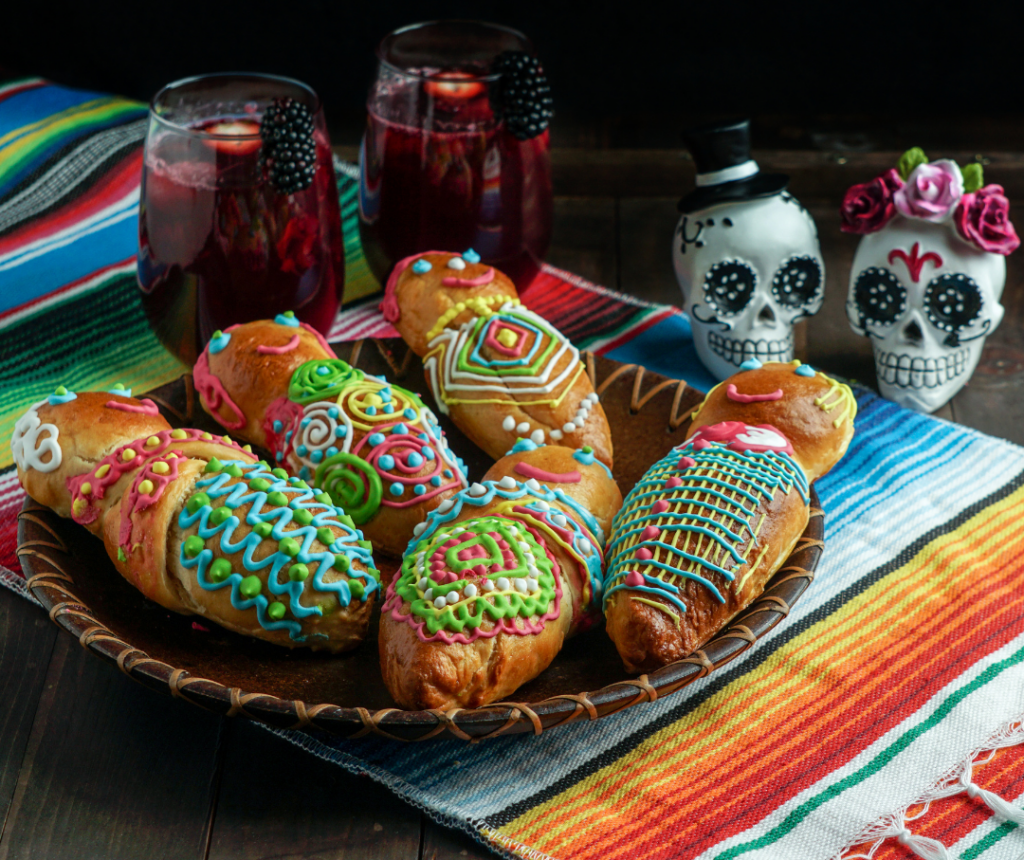
-
Save
Traditional bread from Bolivia, Perú, Ecuador, South Colombia and some parts of Argentina. They’re shaped like a human body and the faces are made of plaster. These represent every member of the family or friend who has died.
Pan de muertos
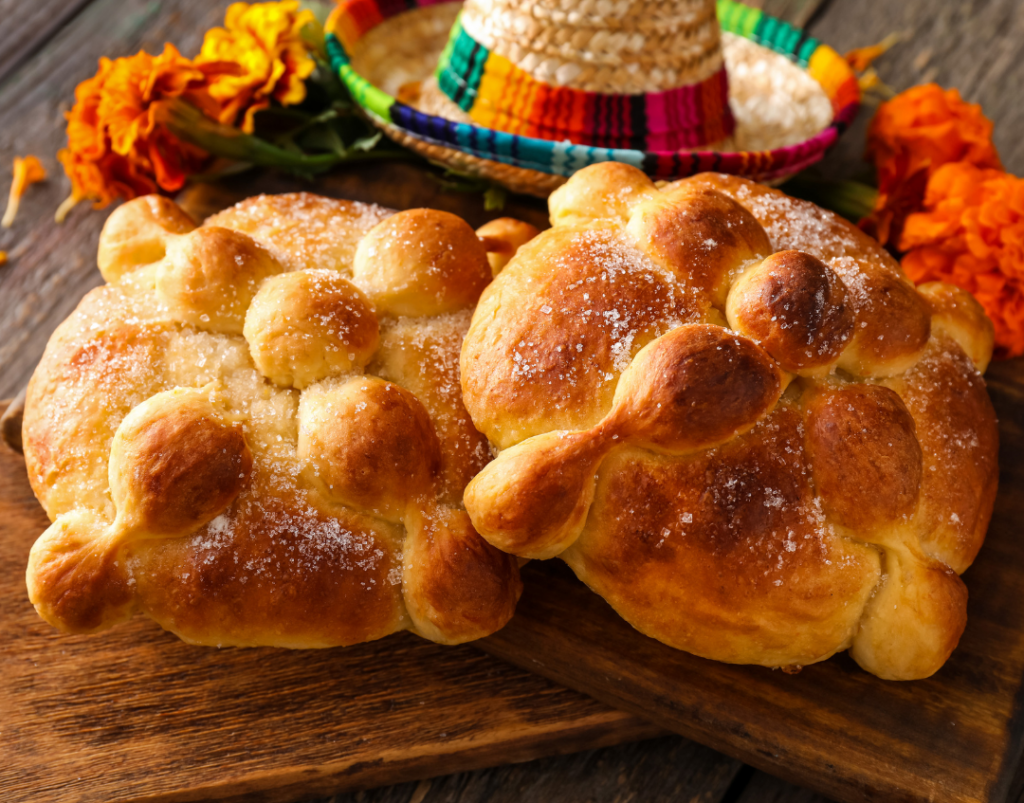
-
Save
Mexican pastry made of corn, generally round-shaped and decorated with a cross which represents a skull with two bones.
Calaveritas de azúcar
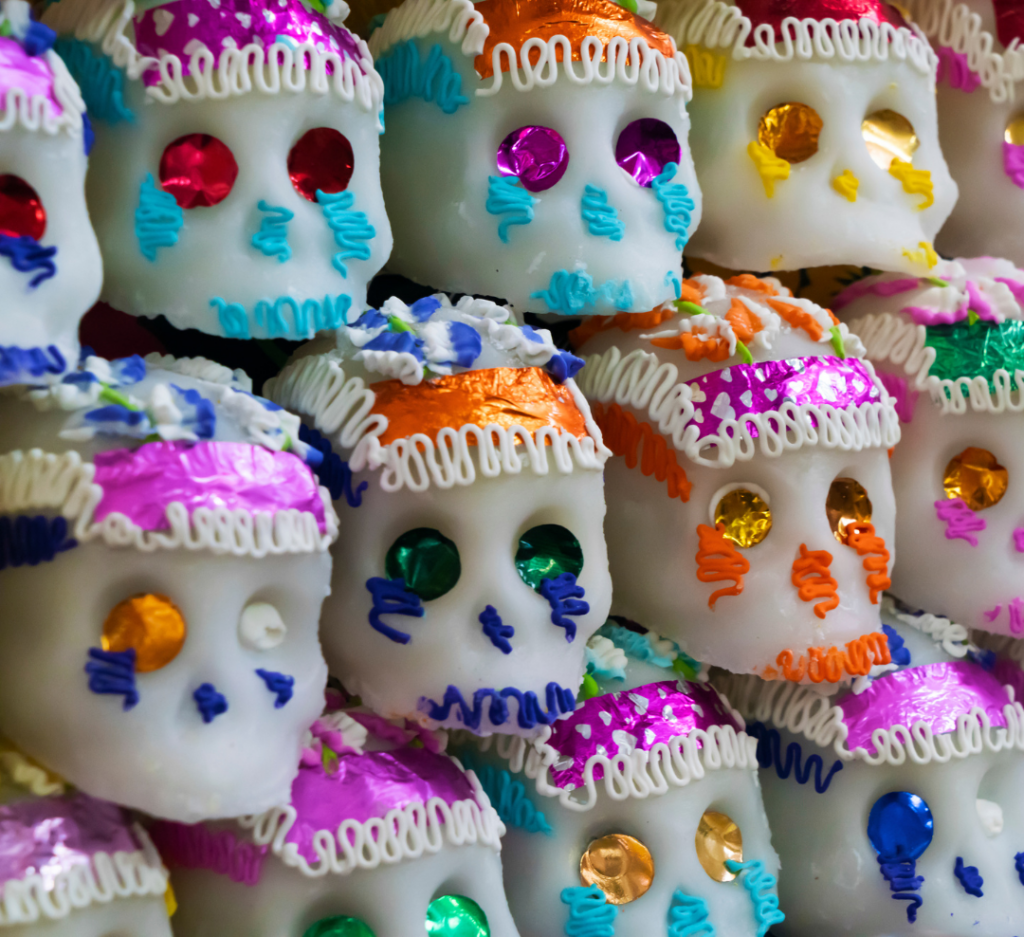
-
Save
Made with sugar paste and lemon. They are decorated with sugar and colourful details.
Calabaza en Tacha
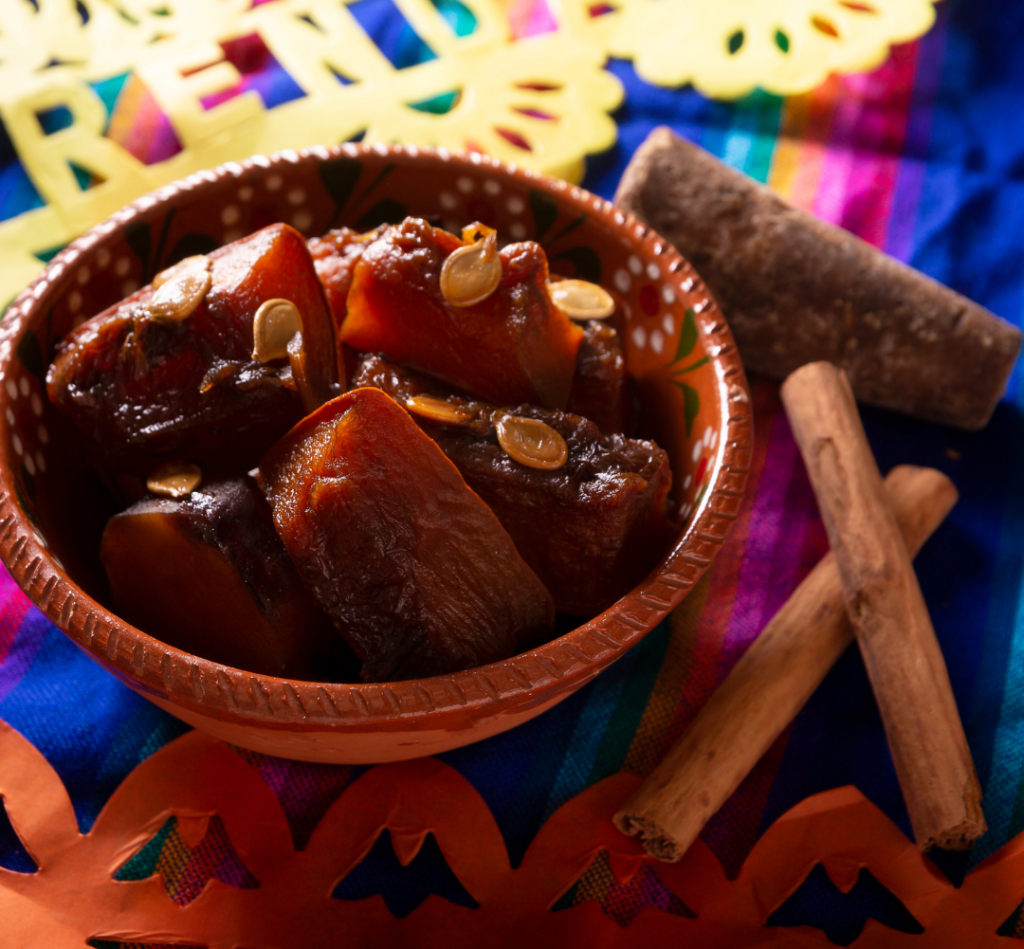
-
Save
A traditional dish of the Mexican natives which is prepared (originally in a tacha) cooking the pumpkin with a syrup made of piloncillo and cinnamon. Piloncillo is a sweetener very common in many American countries.
Mole
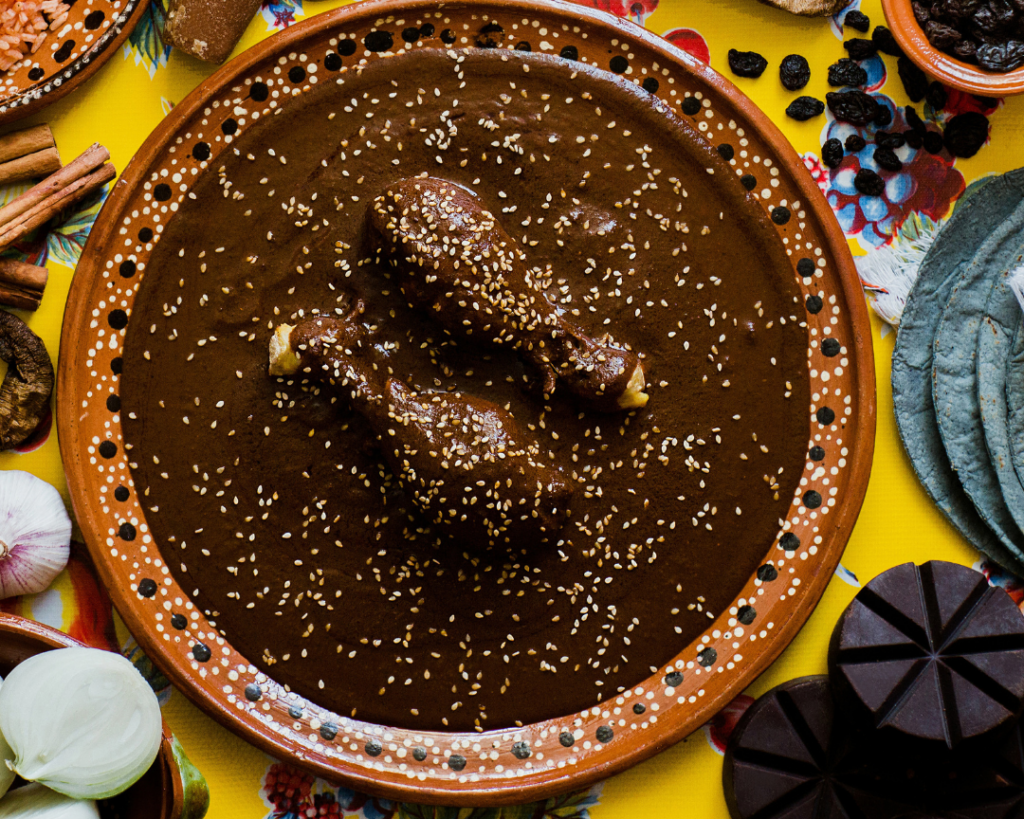
-
Save
They called mole to a wide range of Mexican sauces made with chiles and species. The dishes prepared with this sauce are also called mole.
Tamales
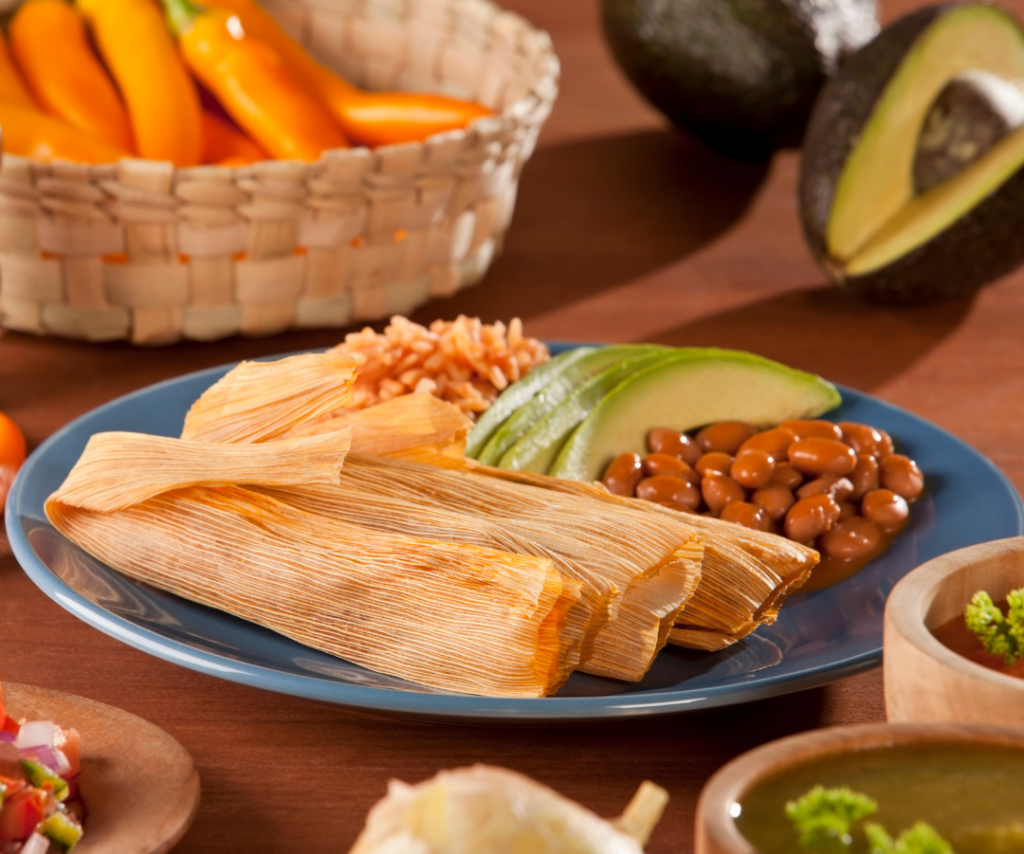
-
Save
A traditional Mexican dish prepared with corn flour and filled with red or orange mole and chicken or beef. They’re also prepared 9 days after someone’s death.
If you want to know more about Día de los Muertos traditional dishes, you can watch this video where they explain the most popular ones and their origin.
La Llora
In Aragua, in northern Venezuela, there’s a creole tradition whose origin could be some indigenous rituals during mortuary ceremonies. La Llora is a couples dance which is danced around a banana tree or a “cambur” plant. This ritual dance has six parts: La Sambaina, La Vaca, El Oso Melero, La Chispa, El San Juan y La Magdalena, El Aguacerito de Dios and El Palito. The music combines joropo, walz, merengue and golpe. Each song represents a different situation and its ending is marked by a cry that sounds like the war cries of the native warriors.
La Santa Compaña
There’s a legend in Spain, especially popular in Galicia, called La Santa Compaña. They say that some nights, especially from October the 31st and November the 2nd, a parade of souls led by a living person holding a cross appears randomly. Legend says if you witness this, it can have several consequences: it’s a sign of death (your own or someone else’s) or you’ll be forced to take the cross and lead the parade until you encounter another alive person.
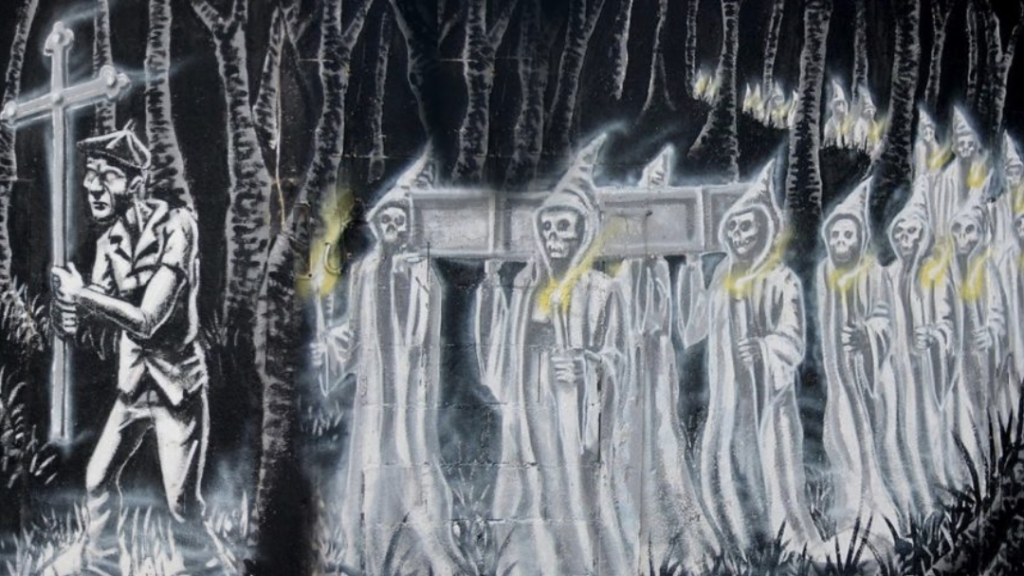
-
Save
There are several versions of this legend, but if you’re interested in this subject, here you have a video about the Santa Compaña.

-
Save
Would You like to Take Your Spanish to the Next Level?
Whether you’re a complete beginner or you’re an advanced student, with us you’ll reach the next level of Spanish quickly and easily. With 24 Levels to Spanish fluency, the next level is always close by, so you will never lose motivation.
You can choose between:
In both cases, you’ll learn Spanish using our successful 24 Level System to Spanish Fluency® and our unique Spanish teaching methods.

-
Save











